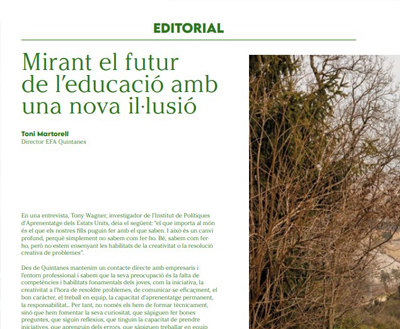
As you know, every year we have a magazine, and we love it!
Last year we took advantage of the occasion of “La Diada de Sant Jordi” to deliver it to the
school monitors.
Many are already on their way to the homes of the people and companies that appear in it,
because without you, it would not be possible, you are the absolute PROTAGONISTS.
Always, thanks.
We hope you like it :)
If you want to browse it, you can find it posted here, in the MAGAZINE tab.
More info: http://www.quintanes.com/imatges/reg1001381_arxiu1_08-05-2023_11-55-03.pdf
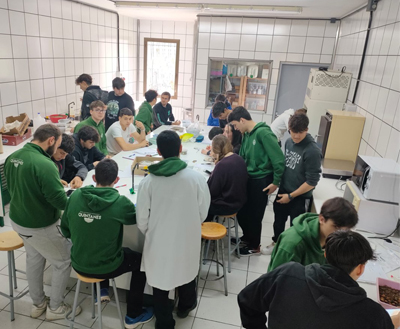
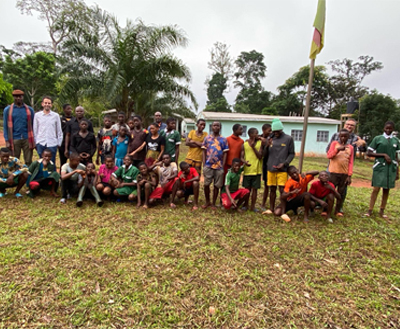
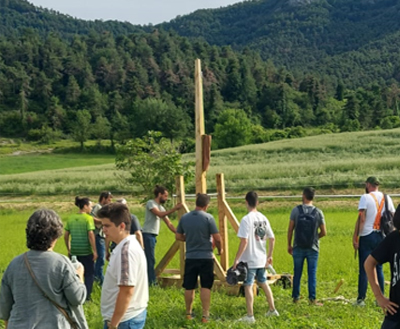
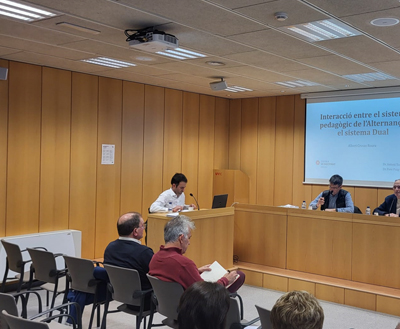
We’d like to congratulate our colleague Albert Crosas, who recently defended his doctoral
thesis, obtaining the distinction Cum Laude.
A study that deals with the pedagogical system of training by Alternation and the Dual. The FP
will become Dual in its entirety in the next academic year, despite the low implementation rate it
currently has and the shortcomings it presents.
The pedagogical system of Alternance training, despite not being recognized by the educational
administration, has satisfactory experiences for the students and for the development of their
environment, an example is the EFA Quintanes school. Analyzing the properties and
characteristics of both to seek the integration of elements of the Alternation in the Dual modality,
and facilitate the application and improvement of academic results at an educational, business
and social level.
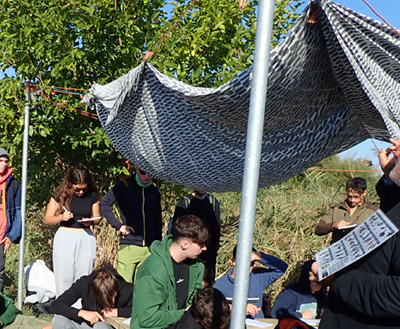
One of the goals we seek with the study trips is to improve and consolidate the basic skills that
the students must have acquired once they finish the training cycle.
All courses live away from home for a week and consolidate the class group. We visit places
with an area where they can develop and find those points discussed in the classrooms. For
example Valencia, Seville, the Basque Country, France, the Pyrenees, Soria..., each specialty is
looking for a space where the environment favors the application of content.
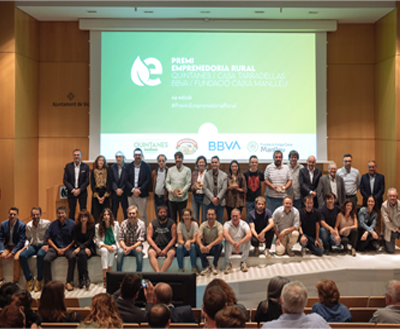
Rural Entrepreneurship Award “Quintanes/Casa Tarradellas/BBVA/Fundació” Caixa Manlleu
2023
The DPagès company, located in Solsona (Solsonès), has won the first place endowed with
15,000 euros. DPagès is a company created by two agricultural engineers with the aim to
produce an organic pork alternative, with a more sustainable and social outlook.
In addition, for the first time, as part of this 4th edition, three grants of 2,000 euros each have
been awarded according to sustainability, social impact, and young company criteria.
The access linked to sustainability has been for the exploitation of “Les Gambires de Torelló”
(Osona).
For three years, this operation has been moving towards a sustainable model. The farm is
transitioning to regenerative agriculture, starting from a herd of 60 cows through Voisson
rotational grazing.
The social impact award went to the employment company Sambucus in Manlleu (Osona). This
company, which develops its activity in two major areas, catering, and agriculture, was born in
2011 to create “spaces” for professional improvement for people who are excluded or at risk of
social exclusion.
Finally, the young company access has been for Llivins, the wine cellar located in Llívia is based
on the cultivation, elaboration, and bottling of wines. It is a pioneering initiative in La Cerdanya
that aims to promote the primary sector with added value. The first commercial vintage dates
from 2017 and since then it has been released on the market with four wines.
+ info: https://youtu.be/wtamDjUNxrE
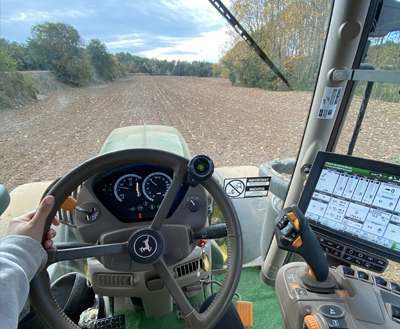
Our students do internships in companies that provide a great opportunity for them to get to
know first-hand the application of the studies they are doing. In addition, it allows them to create
their training itinerary because they can change companies throughout the training cycle.
Not only that, it also allows them to become responsible and independent. For example, they
are the ones who search for internships, although if they can't find one we help them. In this
search, families also play an important role, either by providing possible places or by
accompanying them to the initial interviews.
Fragment text magazine'22. You can read it on the web. They are written by the FCT monitor
team.
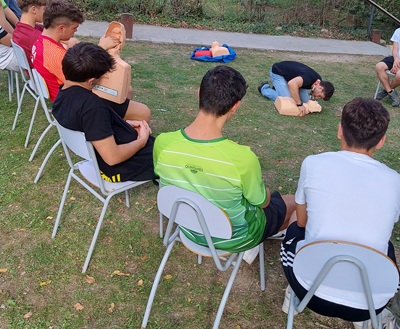
Every year, we have had a visit from the “Osona Red Cross” trainers to prepare our middle
school students.
The students had six hours of class to receive theoretical and practical training to learn how to
act in an emergency, and what first aid you can apply. We are delighted and grateful for their
service. We hope to be able to continue working together to provide knowledge to our students.
Thanks to the Town Hall of “Masies de Voltregà” for their participation.
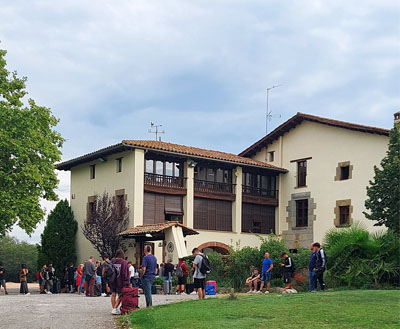
When the students arrive, we can say with all the joy that the new course has already begun!
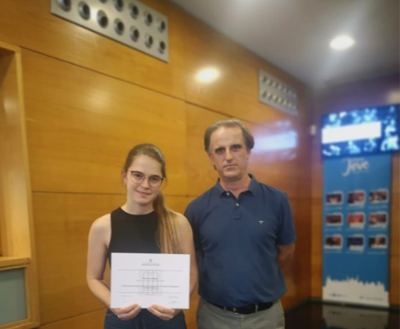
The student Aina Porcar was awarded by the Department of Education of the Generalitat as
the best record in Catalonia in her specialty. The student has received the award of
‘’Extraordinari dels Ensenyaments de Formació Professional de Grau Superior” from the
Agraria family. This was presented at an event held at the Higher Conservatory of Music of
the Liceo of Barcelona on June 26.
These awards have been awarded for the first time this year 2023. They are intended to be
an official recognition of the merits of students who demonstrate special training in these
teachings, with the desire to offer them inspiration to achieve their objectives and a reward
for having achieved them.
There is an award for each professional family of the higher degree cycles taught in
Catalonia, this is to recognize the effort, perseverance, and dedication of the best students
of Catalan Vocational Training.
Congratulations, Aina! You deserve it.
You are more than students, you are a highlight, and you are the future..., of a sector that
needs you. We need people who love what they do and deliver the best they can have.
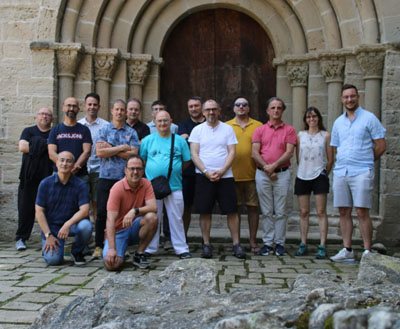
To complete the course decently, the center management offered a day at the Món Sant
Benet in the internal cloister.
You could enjoy a guided tour to discover the history of this special site located in Bages.
Next, they began to chat quietly, while savoring the delicious proposals offered by the
gastronomic space of the old monastery.
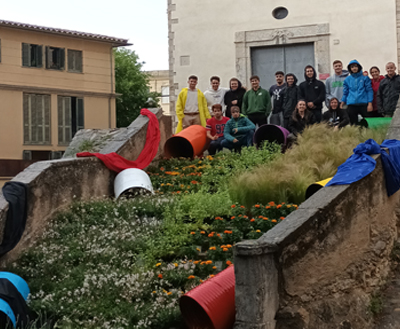
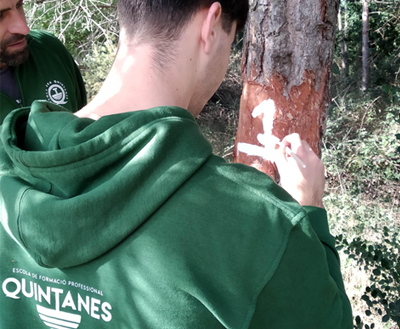
The EFA Quintanes uses the property on which it is located to carry out diverse types of
methods and actions.
The farm, owned by the Antiga Caixa de Manlleu Foundation, has
about 160 hectares, of which about 138 hectares are forest land. The farm is communicated
between the school and a lease for the management of crops and pasture.
Benefiting from the renewal of the previous Technical Plan for Forest Management and
Improvement (PTGMF), all the school's teachers renewed the uses and management
previously planned to link them to the different subjects covered in the classroom.
The marks were made by the students of the 1st year of Higher Education in Forestry and
Natural Environment Management throughout the morning; It will be completed by doing
them in different practices.
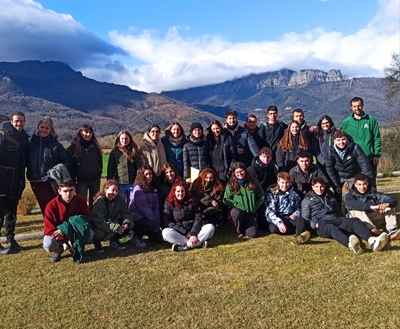
We visited the LA CARRERA farm, located in the municipality of Sant Esteve from Bas,
which is a grass-fed cow farm, which raises calves to later market their meat.
During the stay, the students were able to learn about the evolution of the farm. The traits of
the breed and the management of the cows throughout the seasons of the year.
Furthermore, the production of crops to feed the livestock, the application of a feeding
system of calves based on a forage ration, and innovations. Among other things, new
technologies are applied to the location and control of livestock, and how they market their
products through the NATRUS brand.
We thank Sergi Pujolriu and Salvador Carrera for their kindness and attention in welcoming
us, a great educational experience.
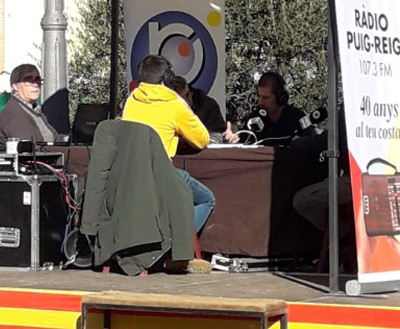
On January 5, 2023, the 26th Kings Fair was held, and in parallel the 11th Casserres
livestock show (Berguedà). Quintanes has actively partaken with the traditional tent, roll-ups,
and magazines, ...with 3 monitors: Josep Bagaria, Albert Crosas, Josep Llorens, and a
former school monitor, Marco Jacho.
This fair is becoming more and more important in the Berguedà region and its surroundings.
This year, in addition to the exhibition of different species and breeds of livestock,
agricultural, forestry, gardening, and commercial stands, it has had the live presence of
Radio Puig-Reig. We have had the opportunity to participate in an engaging and lively round
table/debate, lasting approximately half an hour, on vocational training and current events in
agriculture and livestock in Catalonia.
Once again, we want to thank the organization of the fair. Especially the former students
Josep Llorens and Joan Torné for the facilities and the chance they offer us to give voice and
image of the School and also of the sector, so often little recognized. See you next year.
Josep Bagaria.
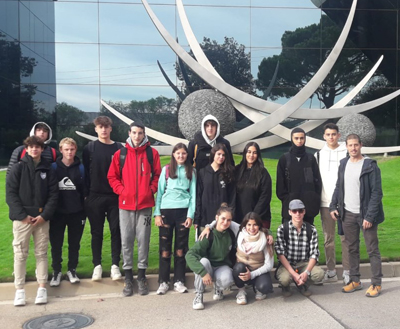
Visit with the 1st year Horticulture students at Honda Greens.
All day we were seeing and tested machines and tools. We want to thank Honda Green for
explaining and showing them all the latest developments in the sector. A super productive
day.
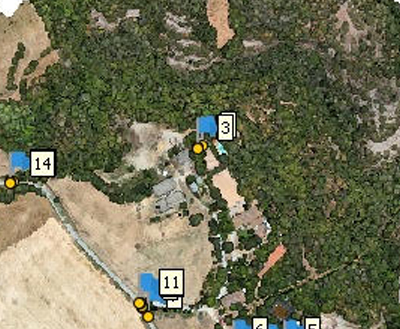
In July, around 160 hectares were flown over with a drone, to supplement the existing
information on the Quintanes farm to improve management.
With the photos obtained, a 3D model will be generated using photogrammetry techniques to
obtain some products such as an orthophoto and a digital model of the piece of land. This
action has been carried out within the scope of the drafting of the new Technical
Management and Forestry Improvement Plan for the Quintanes estate.
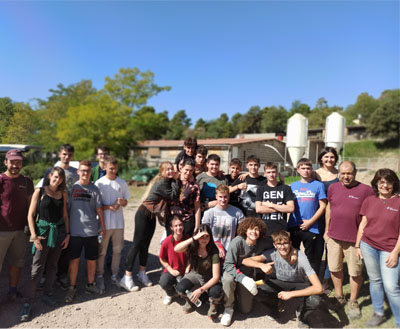
Last Tuesday, October 4, students from the 2nd year of Agricultural Production had the
opportunity to visit Mas Terricabras, in Oristà. The Rovira Costa family is responsible for this
agricultural and livestock holding. It has different activities such as pig production, a herd of
grazing cows, and fattening calves. They have different crops like cereal crops for grain,
fodder crops intended to feed the herd, unique crops such as chickpeas with Denomination
of Origin, and crops of varieties with differential qualities such as Xeixa and Forment wheat.
Mas Terricabras is also an innovative company that uses renewable energies, such as the
biomass produced on the farm to heat the farm and photovoltaic solar panels that produce
electricity.
Mas Terricabras opens its doors to the public, welcomes visitors, and participates in the
farmer's welcome days: Many things to see, learn and experience! From the Quintanes
center, we are grateful to the Rovira Costa de Mas Terricabras family, for their kindness and
for letting our students make this fascinating visit.
+ info: https://www.instagram.com/masterricabras/
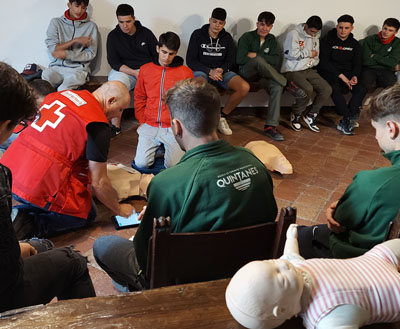
Having first aid skills and knowledge helps create safer and healthier communities. This is
what all the National Societies of the Red Cross promote and work for. It ensures that
children and adults must have access to quality first aid education, a lifelong commitment to
learning, and providing first aid that makes a more resilient society.
As a center, we provide our students with this vital knowledge. Every year at the beginning of
the course, the Red Cross visits our center to provide this training to all our first-year
students.
We are very grateful to the Masies de Voltregà Town Council, which subsidizes this training,
demonstrating the sensitivity and support towards this learning within the school
environment.
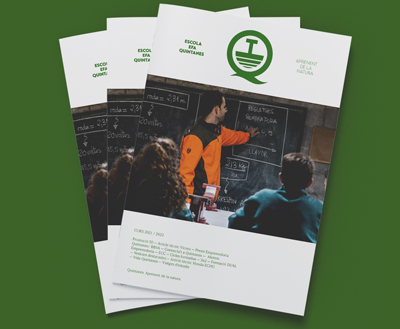
We want to thank everyone who participated in the magazine, without you the magazine
would not be possible!
We hope you like it a lot, we did it with all the effort in the world, hoping to convey the
essence of what happens in Quintanes throughout the year.
+info:
http://www.quintanes.com/imatges/reg1001272_arxiu1_22-04-2022_20-36-34.pdf
+ info: http://www.quintanes.com/imatges/reg1001272_arxiu1_22-04-2022_20-36-34.pdf
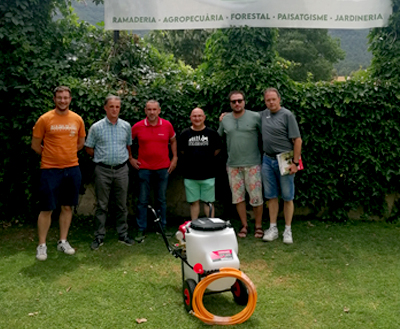
On June 20, 2022, Mr. Pedro Sillero of the company Honda Greens de la Garriga delivered
a model CPH 55 sulfating trolley. This machine will be used for plant pathology practices for
gardeners, farmers, and foresters.
One more machine to expand the range of possibilities to do real practices of phytosanitary
treatments with E.F.A.’s students.
From here we want to thank the company Honda Greens. In particular Mr.Pere Cañizares
and Pedro Sillero for their help, collaboration, and support in the formation of our students of
current and future professionals in the sector.
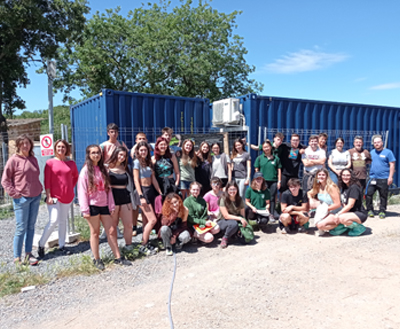
The Cal Ros in Muntanyola farm is part of a European project know as FERTIMANURE in
which UVic (Beta Center) and the Vic Flat Cooperative collaborate.
A project was carried out for the innovative recovery of nutrients from secondary sources to
produce high-value-added fertilizers from animal manure. FERTIMANURE is an acronym
given in English as ” Fertilizers from animal MANURE”.
Twenty partners from seven EU countries, Argentina and Chile are teaming up to implement
this project.
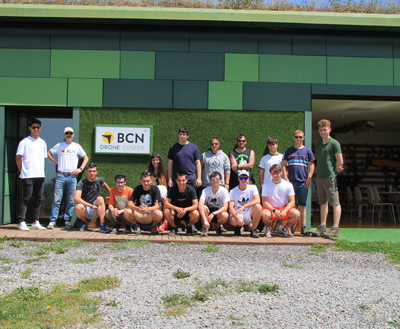
We did a study visit to learn about the possibilities of drones in the world of landscaping. A
tool of the present with a bright future.
The BCN Drone Center is 1 of the only 10 drone centers in the world. The first civilian drone
company in Europe, and one of the pioneers worldwide, is here next door.
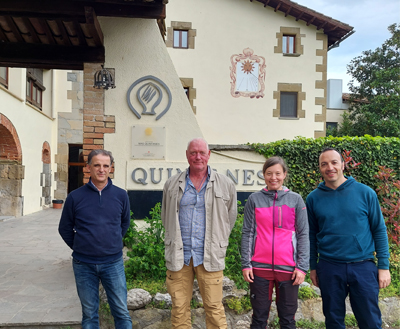
European Forestry and Environmental Skills Council (EFESC) is an organization of
members of industry representatives and organizations that manage and oversee the
capacity certification processes and competencies at the national level. EFESC was
established in 2009 by members of the project Leonardo of the UE. In 2012 the EFESC
Manual was approved, and the organization was formally established.
EFESC's mission is to make smoother the mobility of forestry workers and green areas
within the European Union in the accreditation and promotion of the recognition of individual
national qualifications among partner countries at the European level.
In May Kris Hofkens (Inverde, Belgium), Jessica Schmidt (KWF, Germany) and Carles Lorca
(EFESC National Agency, CTFC) visited the school to carry out the control audit.
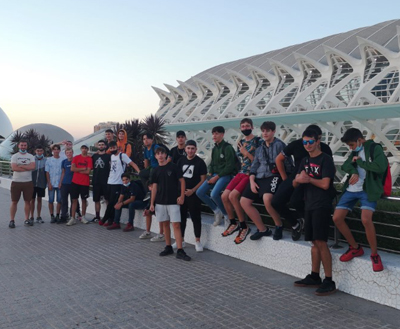
Al principio del grado nos gusta realizar un viaje para introducir a los alumnos de primero de
Grado Medio en el mundo de la Jardinería, por eso fuimos de viaje al País Valenciano,
donde se programaron visitas a diferentes espacios para que puedan observar diferentes
zonas verdes de tipologías variadas.
El objetivo de este viaje era ver los diferentes espacios verdes que puede haber y que
puede acabar trabajando el alumno, ya que vimos jardines privados, parques públicos,
jardines históricos y botánicos y finalmente un parque natural.